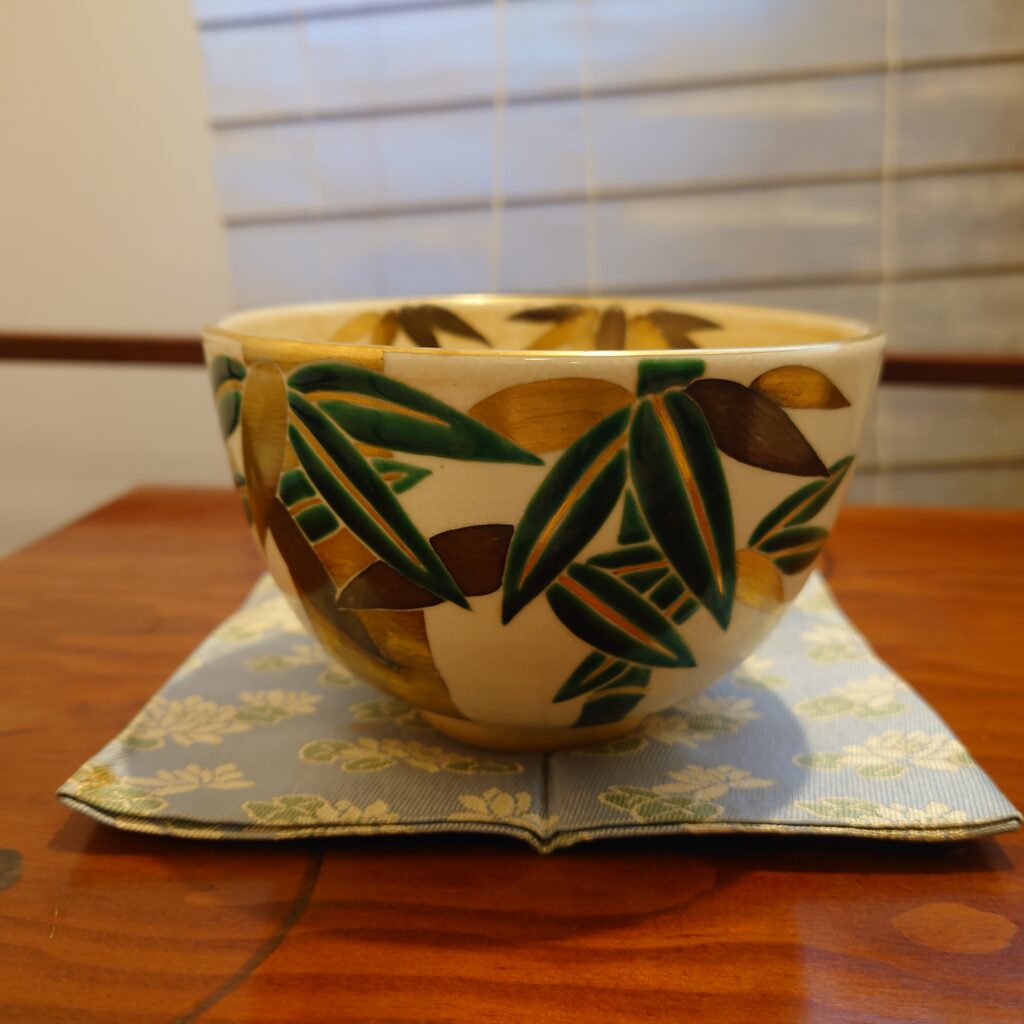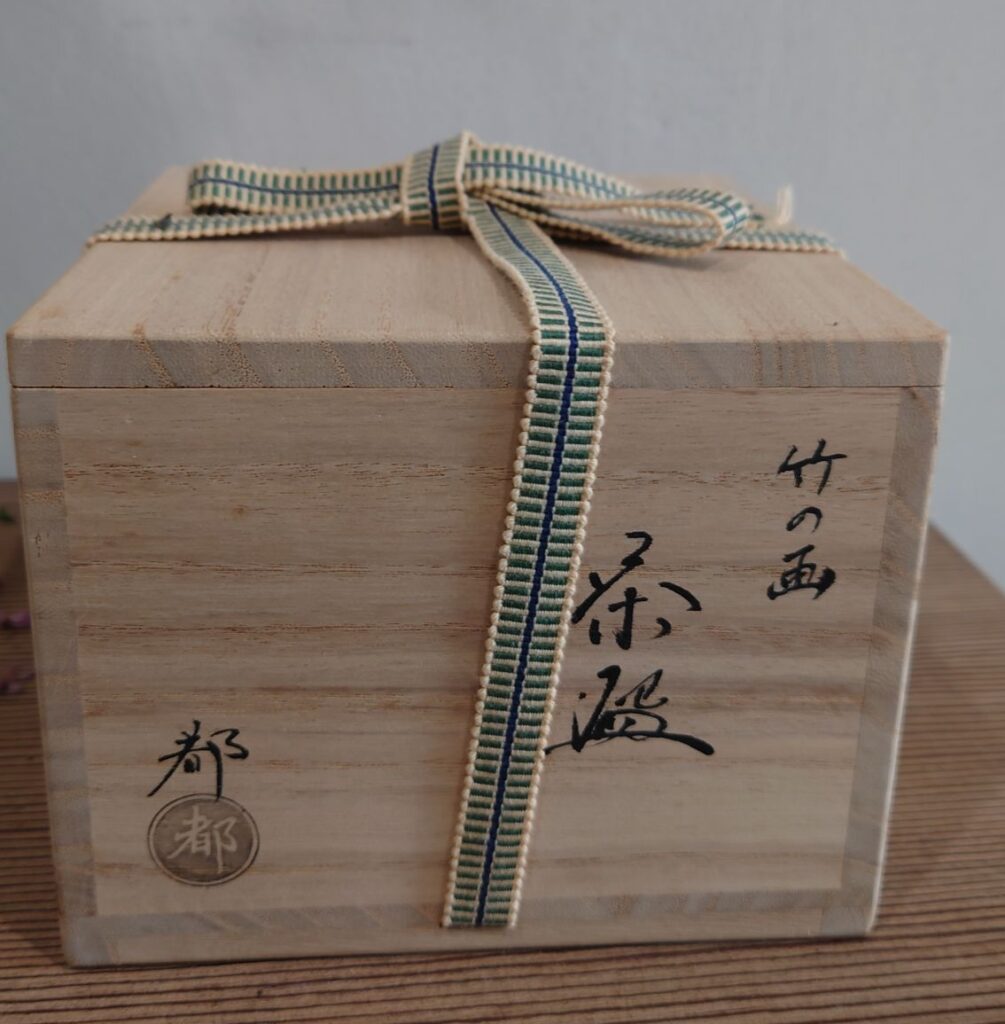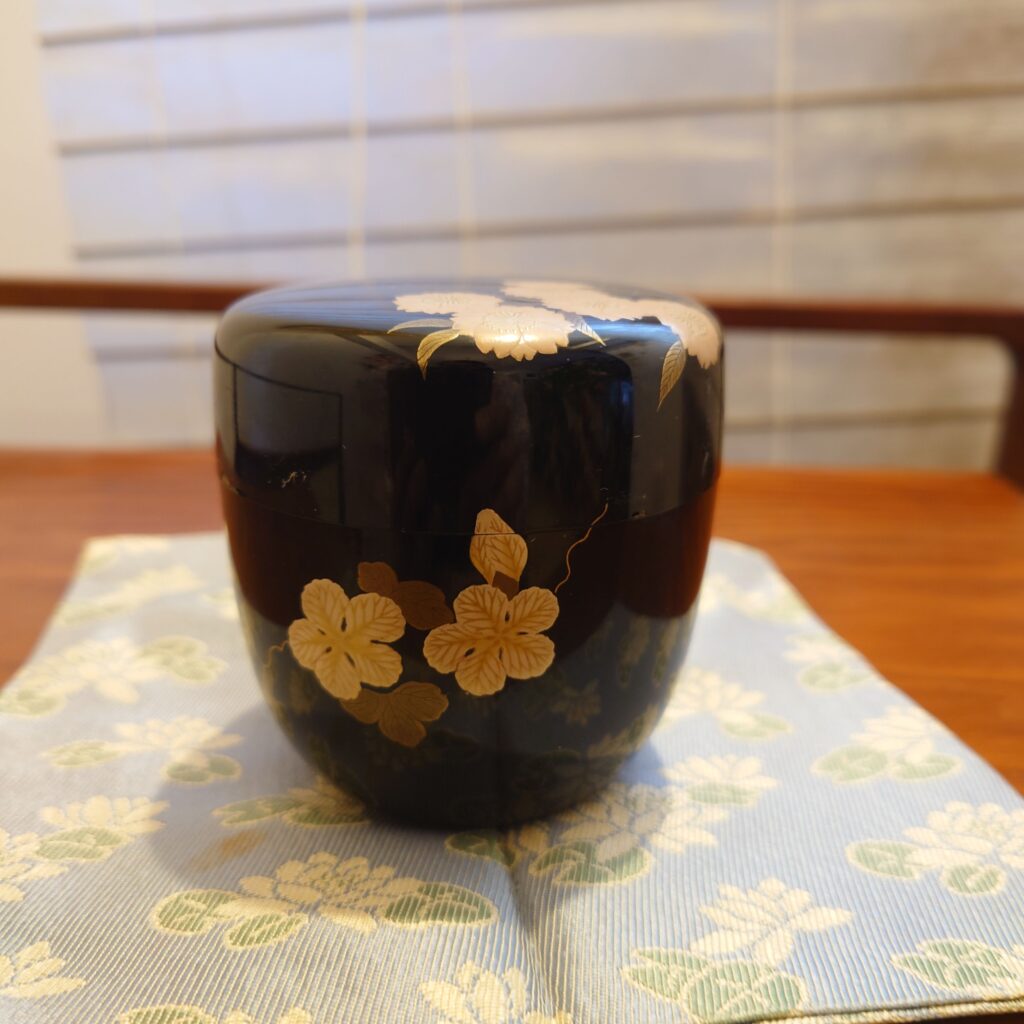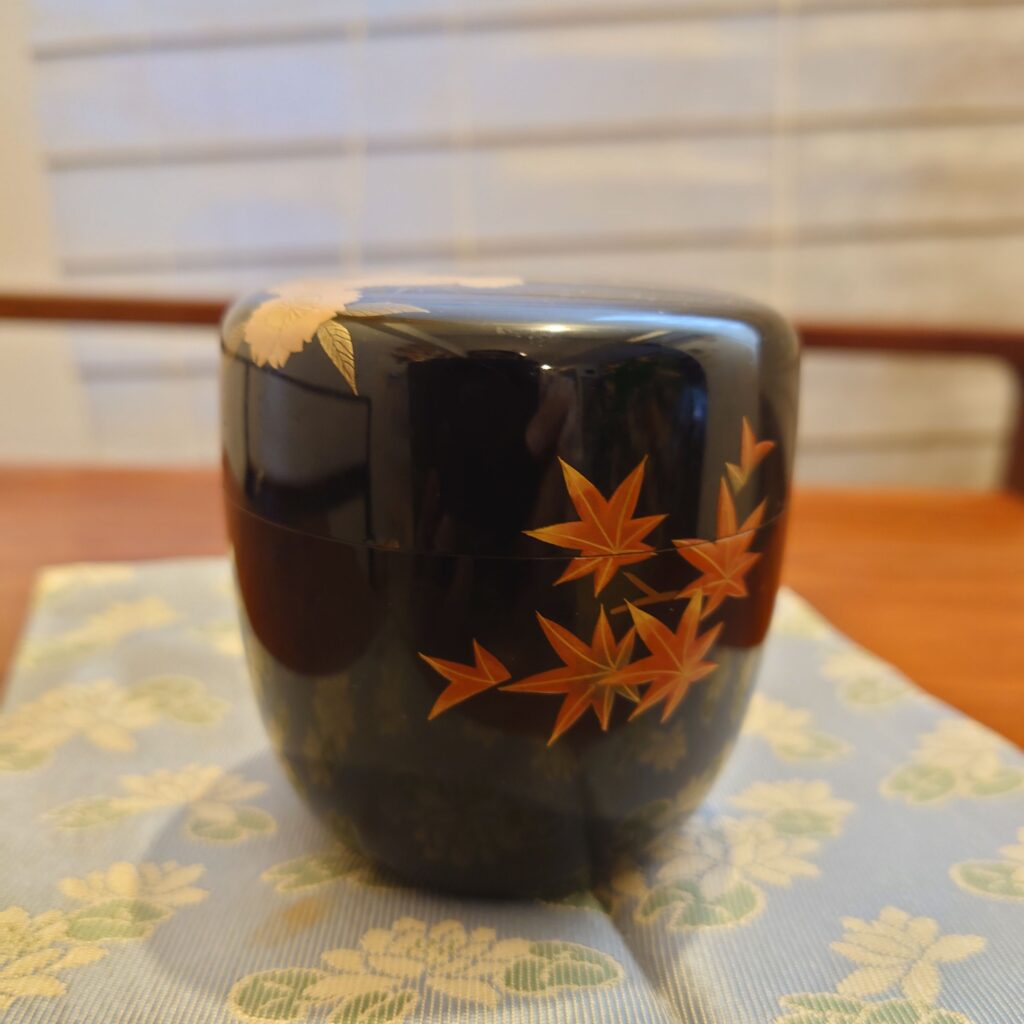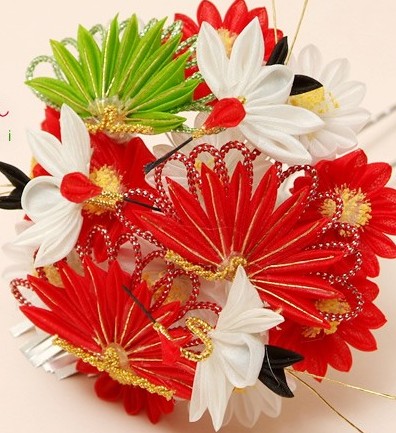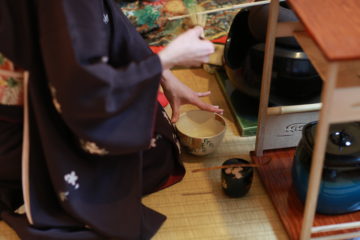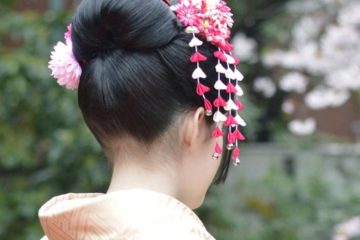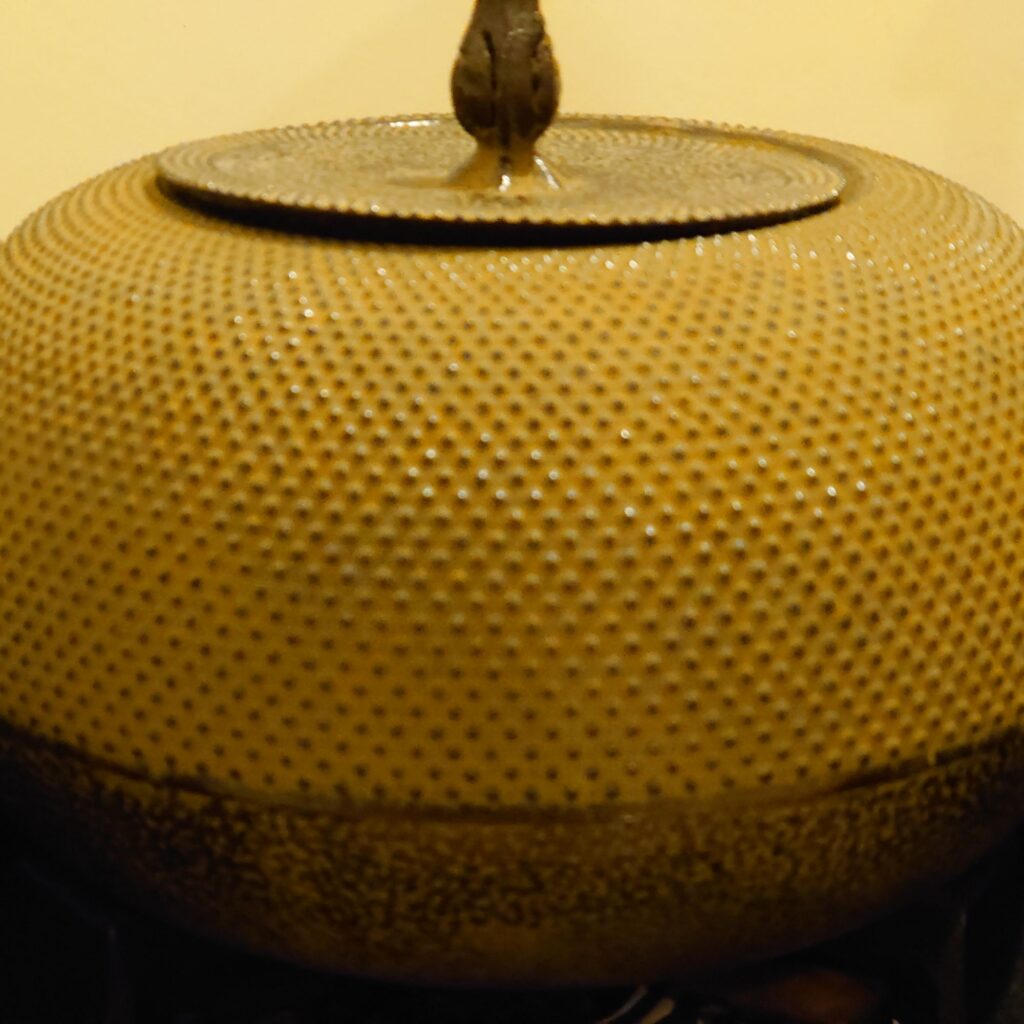
Kettle “Cha-Kama 茶釜” Iron made by Oigen since 1852 Iwate prefecture Style Maru and Pattern Arare
https://www.oigen.jp/
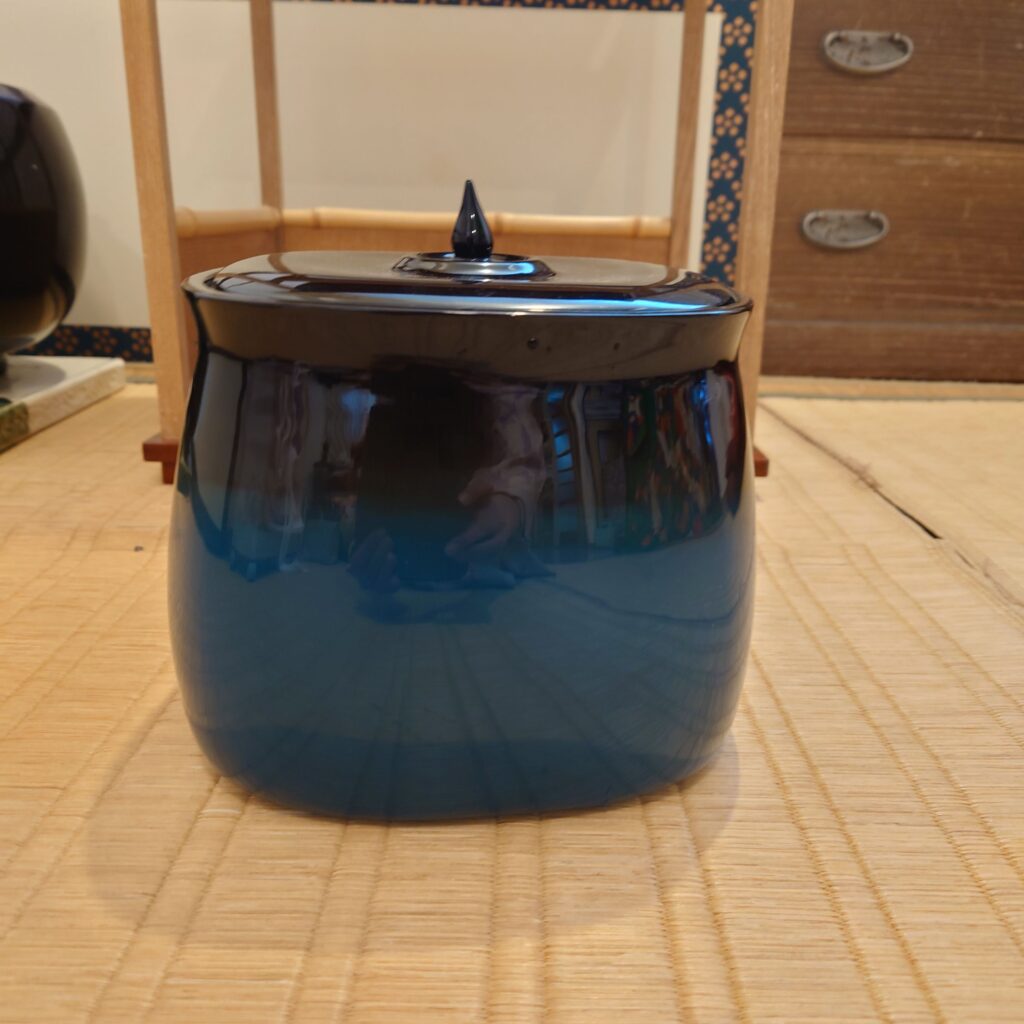
Water container “Mizusashi 水差し“ Name “Shizuku しずく a water drop” lacquer
made in Wazima-Ishikawa prefecture, rare blue lacquer
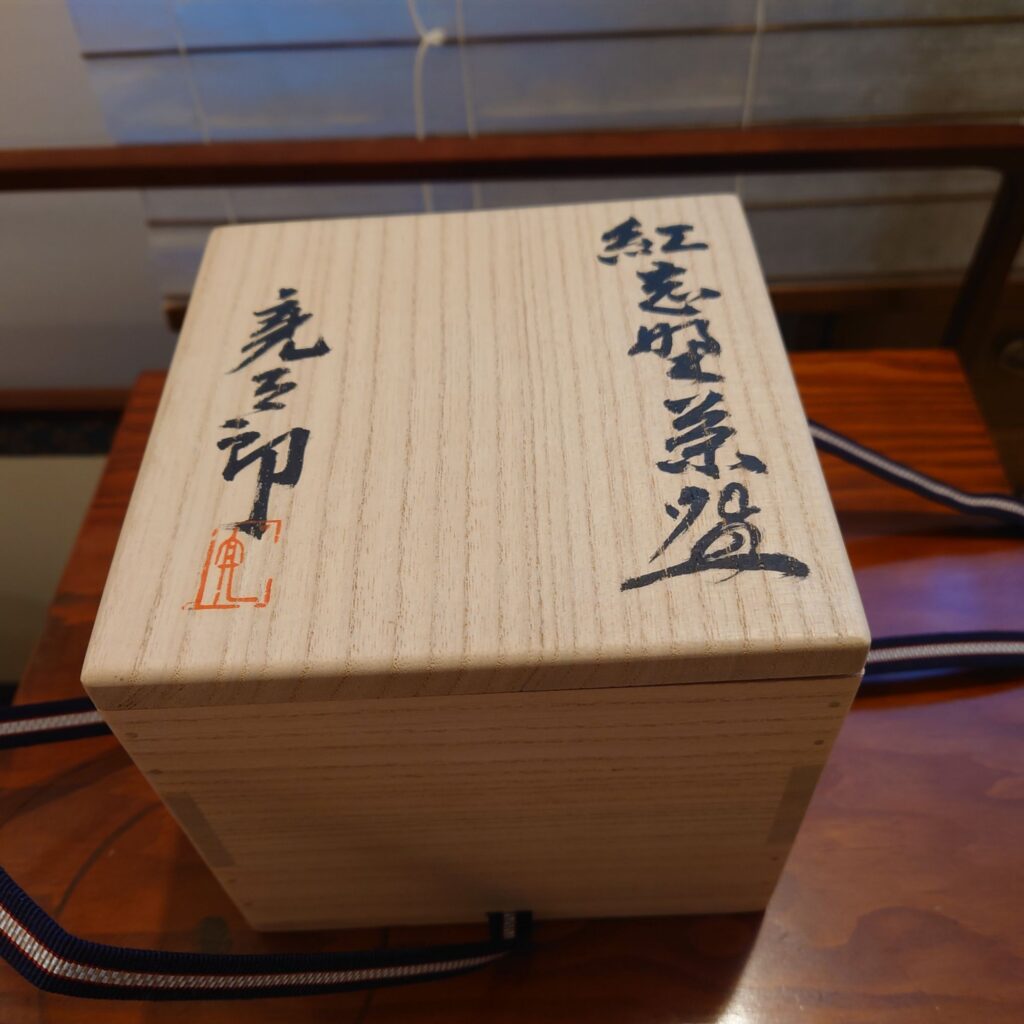
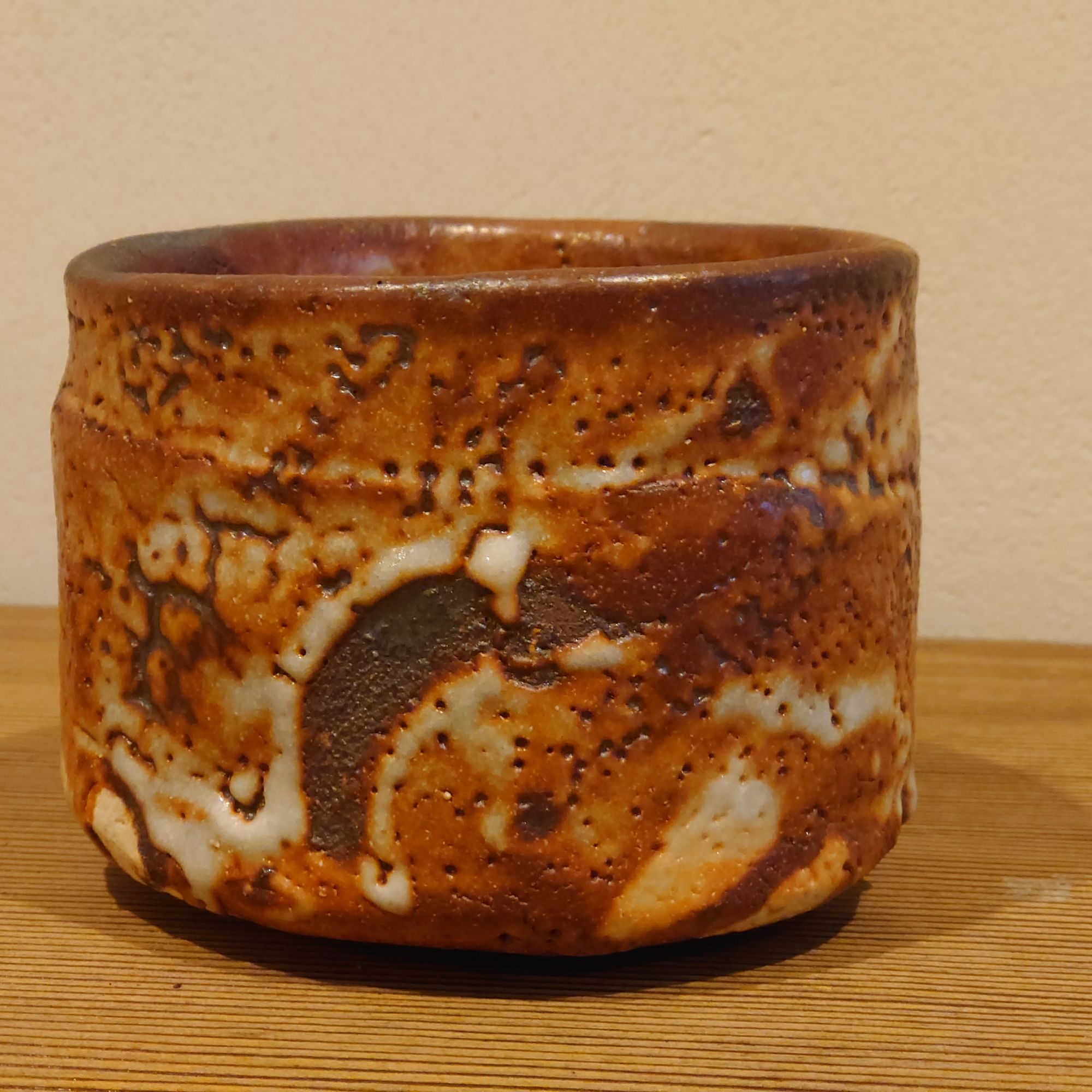 Main Tea bowl “茶碗 chawan“ Beni-shino 紅志野 (red Shino)* Shino Gifu prefecture Artist Mr Kato-Rotato who will be in succession to “the Ⅷ Kobei” name his grand
Main Tea bowl “茶碗 chawan“ Beni-shino 紅志野 (red Shino)* Shino Gifu prefecture Artist Mr Kato-Rotato who will be in succession to “the Ⅷ Kobei” name his grand
papa was a national treasure the “Ⅵth Kobei” Kobei pottery since 1804 幸兵衛窯 (koubei-gama.co.jp)
*Shino: emerged in the 16th century, but the use of shino glaze is now widespread, both in Japan and abroad. It is identified by thick white glazes, red scorch marks, and a texture of small holes.
2nd tea bowl “替茶碗 kae-chawan Name “picture of Bamboo 竹の画茶碗” made by Ms Miyako Imaoka at Kiyomizu Kyoto prefecture
Container for powdered tea “棗 Natsume” Name “Four seasons at Kyoto 京の四季” lacquer made in Kyoto
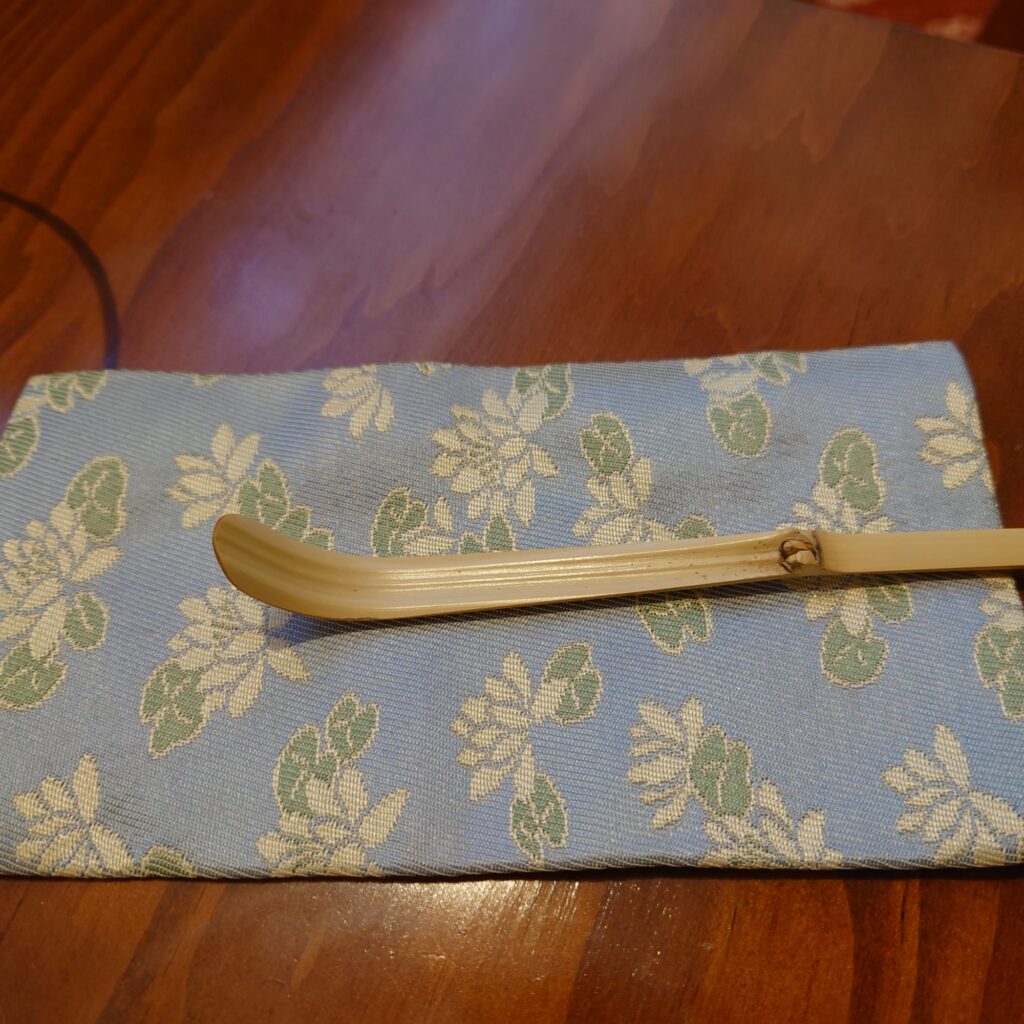
Tea scoop “茶杓 Cha-syaku” bamboo
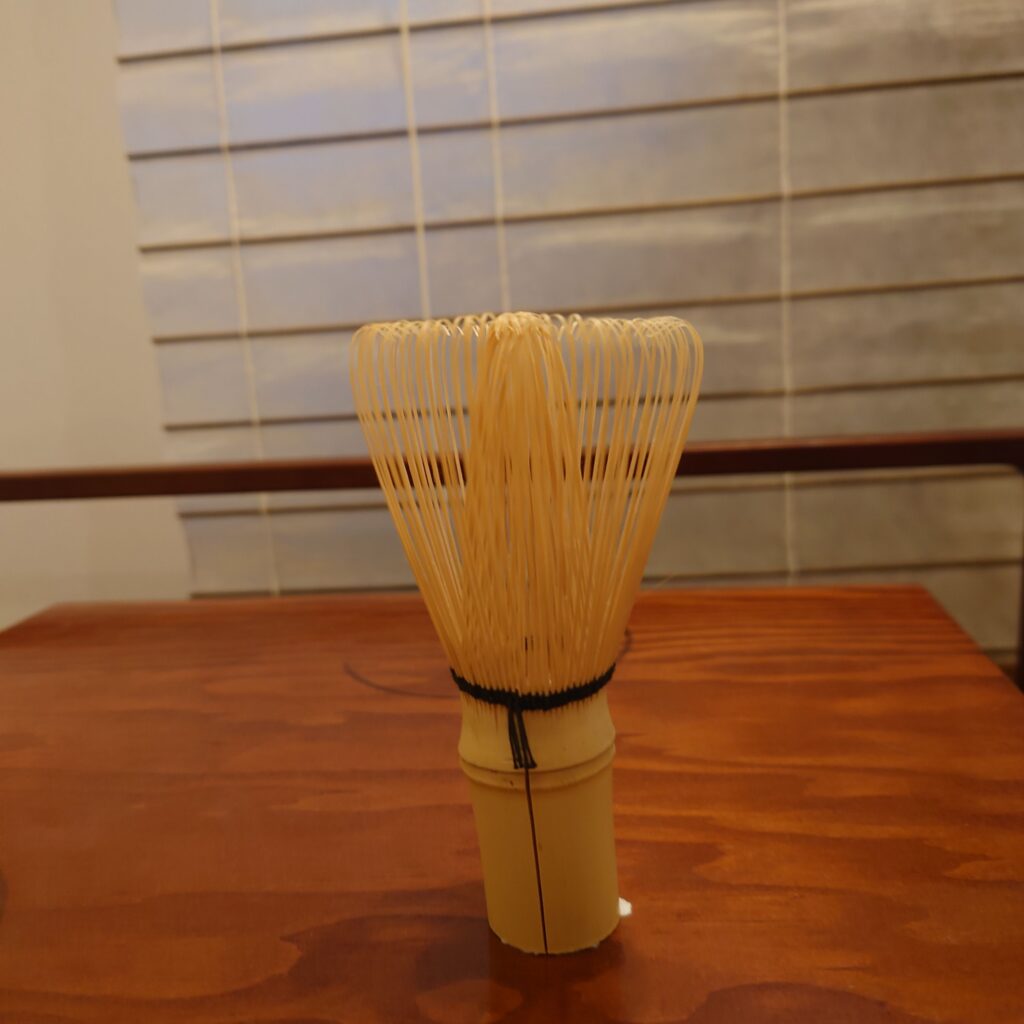
Tea whisk “茶筅 Cha-sen” bamboo
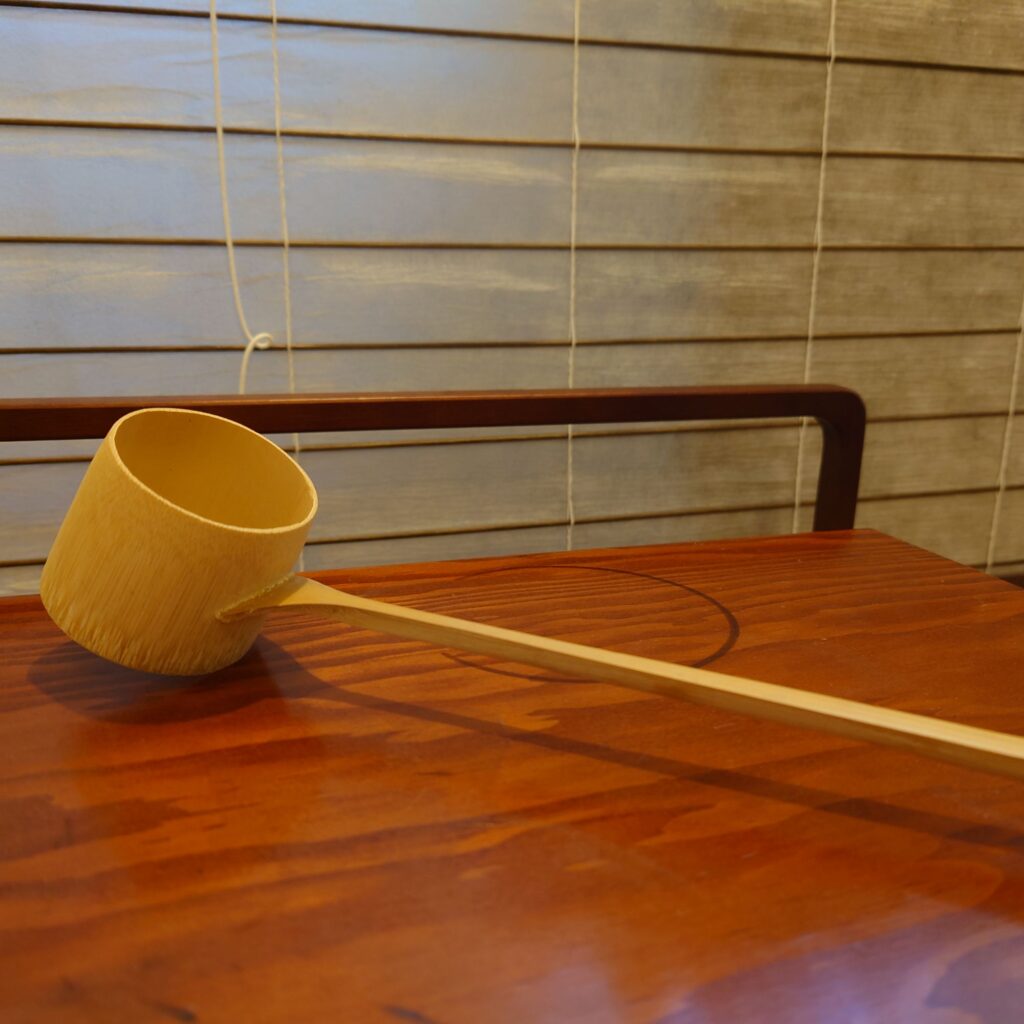
Ladle “柄杓 Hisyaku” bamboo
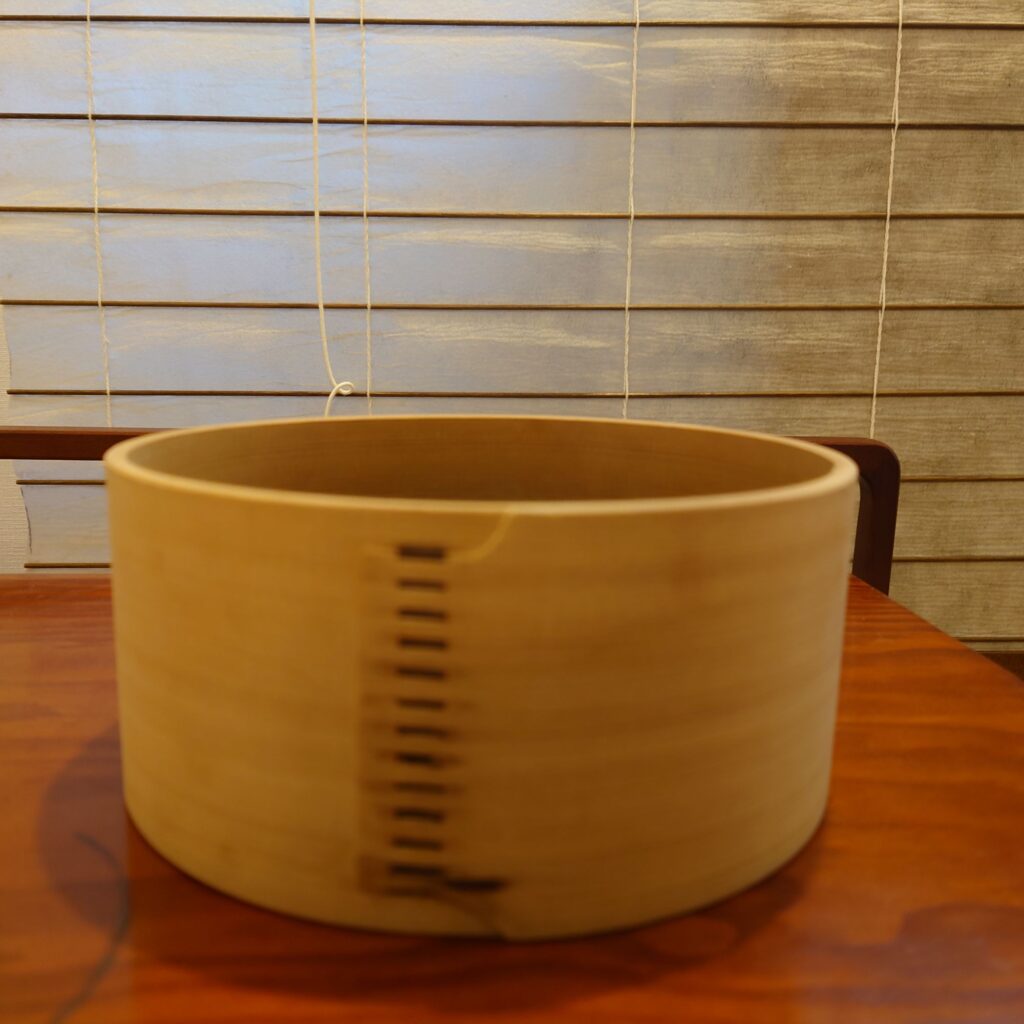
Container for used water “建水Kensui” Brazier
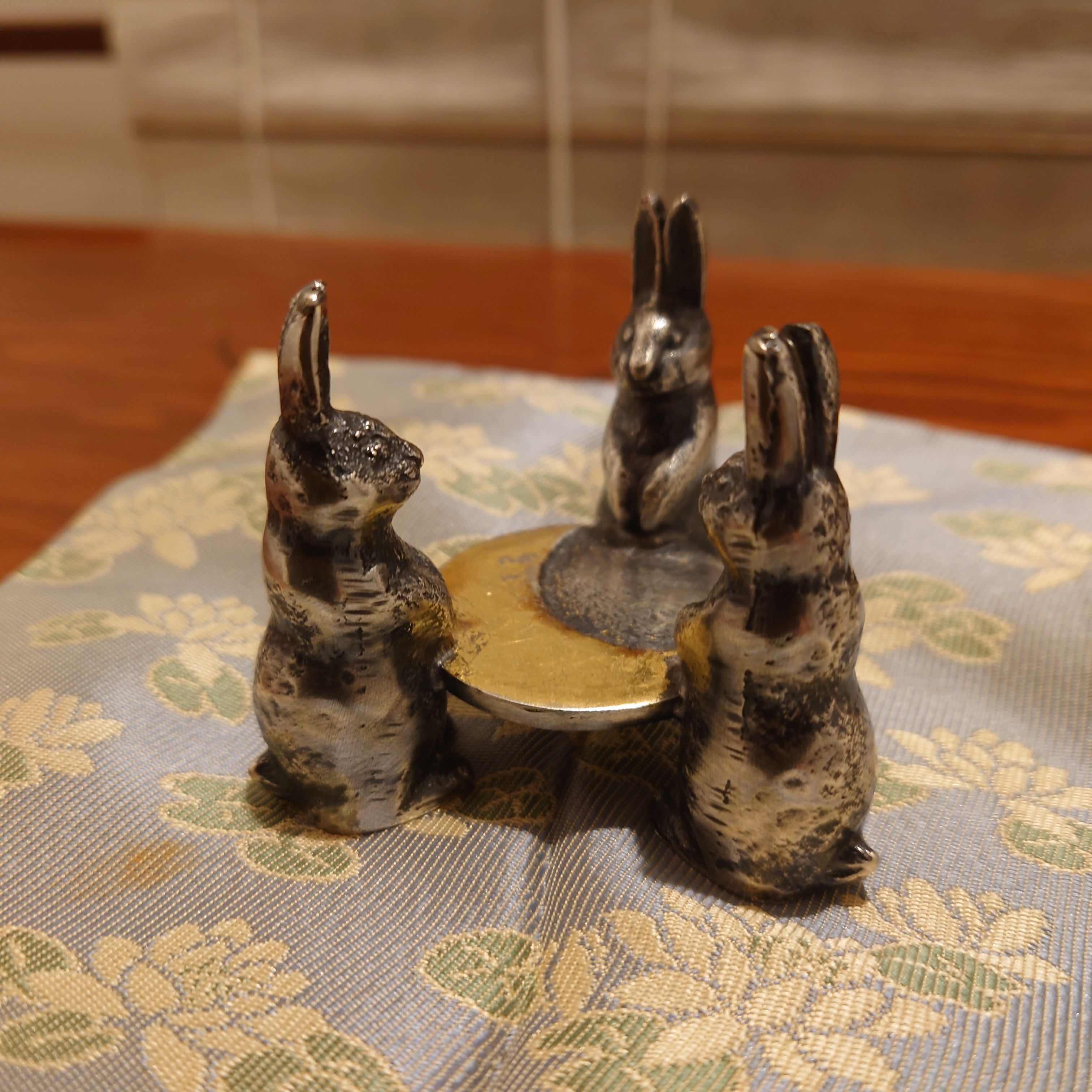
Rest for the lid of the kettle “蓋置 Futaoki” Brazier Name “三日月 Crescent”
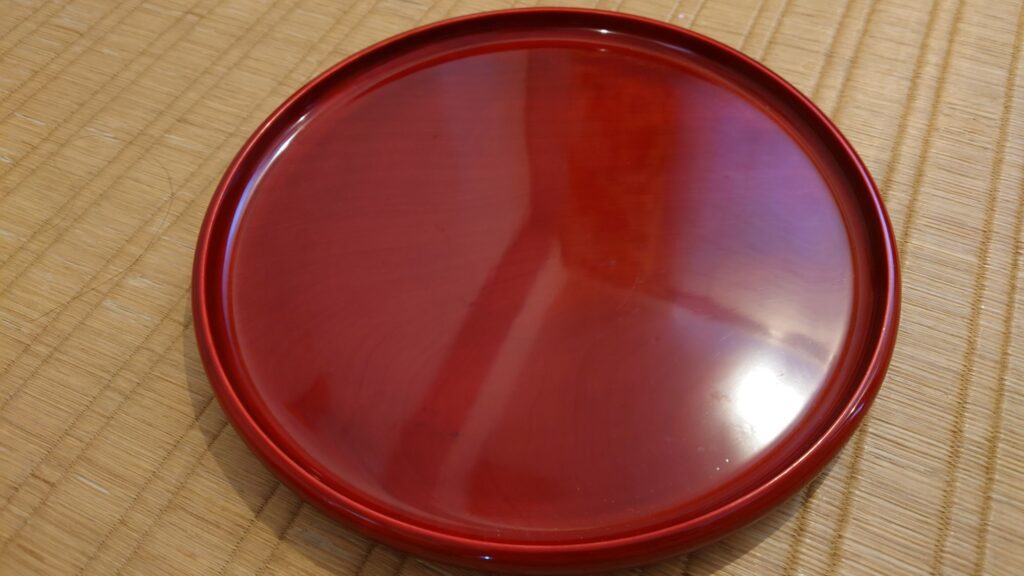
Tray “お盆 o-bon” Hida-Shunkei Lacquerware which is characterized by use of transparent lacquer to preserve the natural beaty of wood-grain.
Tea “茶 Cha” Uji – Kyoto prefecture by Morihan since 1836
Candy “和三盆 wasanbon” 100% sugar-cane made in Kagawa-prefecture in Shikoku by Baiko-do
All items come from Japan
At Sakaeya Kimono Shop
